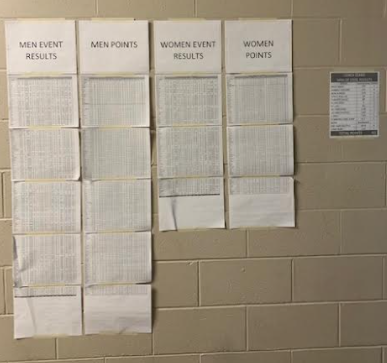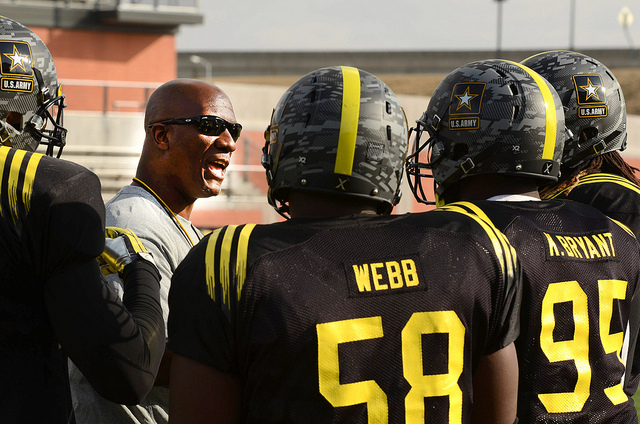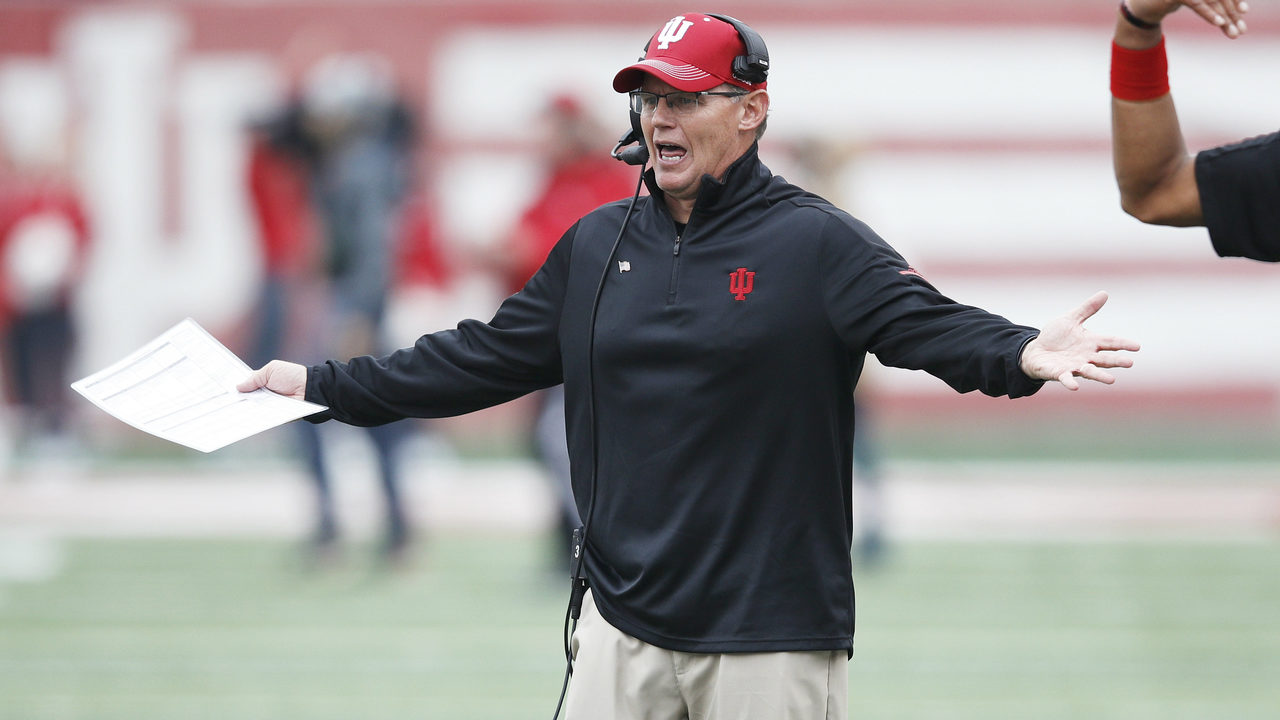Good football programs usually test exercises like Bench, Squat, Clean, 40 Yard Dash, and the 20 Yard Shuttle. That is a good start but how do you know if you have the needed pulling strength, grip strength, proper conditioning, or the ability to vertically and horizontally jump? If you are not testing those additional items, how do you know where your deficiencies lie? I joke with all of our clients, “My job is to find out what we suck at and fix it.” The only way I can fix something is if I have comprehensive testing results.
Six years ago I saw a clinic talk on a comprehensive testing system and we immediately adapted it for our program. It is not hyperbole to say that it changed everything in a positive way. The total test is 14 events (7 strength exercises and 7 athleticism exercises) and each exercise has performance standards that allows athletes to earn points. It is set up exactly like a Decathlon. We use it with every program to ensure that each program is improving and so we can compare players, programs at a particular school, or to other schools. If one of our schools is doing better than others, then we can start figuring out what a particular school is doing well.
TESTING STANDARDS & RESULTS
Testing Rubric and Standards Version 1
Testing Rubric and Standards Version 2
When I get to a new school I do not test the kids immediately because I think the testing numbers are completely useless. I do not think it is helpful to have athletes do things completely wrong and put a number on it. I am also concerned that someone will get hurt performing the exercises incorrectly or because they are out of shape. After these athletes learn how to do all of the exercises and are performing them proficiently, then I think it is a great time to do a pretest. I do understand why people want to do pretests because they show proficiencies and deficiencies but I do not believe the pretest should happen on day one.
After the first test, post the results everywhere you can including online. I treat their results like their game stats instead of like their academic grades so I feel like I should post them. That being said, I do have people complain that their child is embarrassed that everyone can see their results. I want the athletes to see their results so they are constantly reminded of how they need to get better and so they can set goals. If each player gets better, then the team will obviously get better.
Please do not be embarrassed if you take over a program and the pretest results stink because they usually will. The goal of posting the results is to start the competitive process between themselves, their teammates, and other programs. I currently display our results above school lockers, in the weight room, and on our digital classroom platform, so everyone can see them at all times. I even post my results (mine are the single paper to the right in the picture below) so I can also be held accountable.
After the testing is finished and we see how many points each athlete earned, we celebrate any person who scored >45 points and designate them as a “Man or Woman of Steel”. To reward them, we give them a t-shirt that nobody has unless they earn it. Coaches can also earn the t-shirt if they make the standards. One thing that has to be decided upon is if you want to just score the athletes each time they test or if you want to do a “super score” that takes their best results like the ACT. There are pros and cons to both systems and I am not sure which is the best method even though I currently use the “super score” method. Here is the shirt logo from one of our schools:
After looking through the standards, example test results, and the testing process, the following thoughts will help you organize your own standards and process:
- This should be a lifetime achievement test. If you have Freshmen and Sophomores winning the Man of Steel Award, the test standards need to be harder unless the athlete is a FBS type of player. Freshmen and Sophomores have earned this award at two different schools so we changed from “Version 1” to “Version 2”. The standards have to keep rising if the sports are going to get better.
- Never make the standards easier! My current boys soccer team thought it was so unfair that the 1 point standard for Bench started at 170 lbs because only one of them could do that much weight. Fast forward a year later, we have a lot more players lifting at least 170 lbs and now we have multiple soccer players over 200 lbs.
- In the original standards, one of the exercises was Vertical Leap instead of “Dunk”. Doing the Vertical Leap is a much fairer test but we decided to do the “Dunk” because we did not know if our schools would have the needed measuring equipment.
- I do not like to take averages for the entire school population because I do not think it is good data. If your team has a lot of young athletes, your data is always going to be worse than if you have big senior and junior classes. That being said, one of the averages I like to see for football is to only use the data for any player that played varsity. That gives me an idea of how we are doing with the players that determine wins and losses.
After the results are tabulated, I do a breakdown comparing the number of athletes that have won the award. This creates competition between the coaches more than anything else and it allows our administration to know what teams are not progressing or not meeting the standards. If you are only dealing with one team, you could do the same concept but break it down by position groups. The picture below is an example breakdown:
After those numbers are tabulated, “Top 10 Lists” are updated and posted. This creates constant competition between the entire athletic department and the coaches get as competitive as the players because they want their players on the lists.
I started the Top 10 Lists because some of the players stopped trying to get better. Once they got five points for an exercise, they stopped trying to get better at it. When they tested in pull-ups, they would do 15 and then stop because they were trying to save their energy for the next event. I completely understand why they did this but it was skewing my results and it was keeping them from trying to get better. There are flaws to every system and that is the biggest flaw I deal with. This is also one of the reasons why we have to change the standards from time to time. The picture below is the Top 10 Lists that are posted outside of the weight room in the hallway. Every time an athlete walks into the weight room, they have to see them and the great thing is that they actually do look at them as they walk in.
TESTING LOGISTICS
Below is a three day example of the testing organization:
While organizing and implementing your testing procedures, the following thoughts and procedures will help get the most accurate testing results:
- You will need more time than you think. The above days take about 1.5 hours with warming-up and stretching included. We also end up warming up more than normal to ensure that they do well.
- For all exercises except Farmers Walks, Sit-Ups, Planks, and the 300 Yard Shuttle, we give each athlete two attempts. These four exercises are so taxing that we save them until the end and nobody will want to do them twice.
- Make sure the athletes are getting ample rest between their attempts. If you are going to make a mistake, give them too much rest. For example, athletes should have at least four minutes rest between the 40 Yard Dash attempts.
- The ultimate testing schedule ends up being determined by weather and spaces. We end up testing certain things on certain days because of when gyms are available and what the temperature is outside.
- If a group of athletes will be put at a disadvantage because of the schedule, I always give our older athletes the advantageous rotation path so they can do the explosive exercises first and then progress to the harder, more conditioning based, exercises.
- We put the hardest and most taxing exercise at the end because they will have nothing left after that exercise.
EVENT PROCEDURES
Since we do not have electric timing or a variety of other technologies to eliminate testing variables, we are always going to have some slightly skewed results. No matter how many coaches we have involved, we always have some athletes that try to cheat and get away with it. That being said, we try to make it as consistent as possible and some considerations to make each event fair are below.
BENCH, SQUAT, & BARBELL EXPLODE
- Each athlete gets 2 attempts.
- We do a rep test but they can only do a maximum of 3 reps so the 1-Rep Max Calculator is accurate. Once the charts get above three reps, the margin of error increases dramatically.
- If the spotter helps them in any way or puts their hands on the bar, the rep does not count.
- For Squat, it is helpful to have coaches checking for proper depth.
PULL-UPS
- Have coaches count each player’s reps because the athletes try to cheat on this exercise more than any other.
- If their chin does not go above the bar or if their arms do not go completely straight, do not count the rep. I basically stare at their elbows and chin the entire time.
- Once they let go of the bar, they are finished.
SIT-UPS
- One athlete will stand on their partners feet while they count their reps.
- The athlete should cross their hands and keep them on their opposite shoulders. They will need constant reminders for this because they all try to cheat.
- For the rep to count, they have to touch the top half of their thighs with their elbows and go down until at least half of their back is touching the ground.
PLANKS
- Each athlete has to get to each full minute for it to count. If an athlete goes 1 minute and 59 seconds, they will get credit for one minute. You will not be able to give them their own exact time because so many athletes will be performing at the same time.
- If an athlete picks their hands up at any time they are finished.
- I give the athletes one adjustment and then after that, they cannot put their hips up in the air or put their hips to the ground.
- This is very hard to officiate so you will just do your best.
FARMER’S WALKS
- For the 100 yard distance, we have our athletes go 4 x 25 yards because 25 yards is a reasonable distance to be walked in a weight room. We have the athletes go 25 yards and back, twice.
- Athletes will hold a dumbbell in each hand.
- Since the athletes will only do this one time, we have to get a score off of one attempt. Because of this, if they fail on their first lap, we take 20 lbs off of the dumbbell weight and if they fail on their second lap, we take off 10 lbs off. This is not perfect but it has worked well so far.
40 YARD DASH, 20 YARD SHUTTLE, 3 CONE L-DRILL
- Each athlete gets 2 attempts.
- We start the clock on their movement and end the clock when their chest comes through the finish line.
- If they do not touch a required line or cut off a cone, the time does not count.
STANDING LONG JUMP
- Each athlete gets 2 attempts.
- We measure to the heel of the foot that is closest to the starting line.
- We do not measure in fractions of inches. Every distance gets rounded down to the nearest inch.
DUNK
- Each athlete gets 2 attempts.
- They can jump off of one or two feet.
JUMP ROPE
- They will jump on 2 feet the entire time.
- One successful repetition is when the jump rope goes under their feet on one jump.
- We do not let them do double jumps.
300 YARD SHUTTLE
- We do 12 x 25 yards so we can measure change of direction and conditioning.
- Have a coach at both ends of the course to ensure that the athletes are touching the lines with their feet.
CONCLUSION
There has been a lot of advantages to this system and the following list is some of them:
- It takes emotion out of decision making. Just because I think we are doing well does not mean that we are.
- People think that I do the testing for the kids but I also do it for future programming considerations. It allows us to know our weaknesses and what future programming should focus upon. I once took over at a school that was terrible at pull-ups so we knew to attack that deficiency. The hard part is sometimes the changes in programming take some time to see and in my experience, speed and agility really improves in year two. I always have struggled to be patient in the process and I always think that at the next school, the improvement will be more rapid. I am not the only coach that has ever had this problem and this article is a great read on how to attack deficiencies.
- It shows coaches what their kids can and cannot do schematically. For example, if our o-line is not very athletic, then we will probably have trouble pass blocking.
- It shows who should be playing and not be playing in certain positions.
- It shows if our program has too many good athletes on one side of the ball or can explain why the offense/defense is performing at a certain level.
- It creates constant competition between each player, each coach, and each team.
- After an athlete tests the first time, they get very competitive and constantly know how many points they earned and how many they think they can currently earn.
If you are interested in learning more you can go to the resources page on my website (https://exceleratead.com/training-theory) to find my FREE and moderately priced CoachTube Courses, Coaches Choice Videos, and a variety of other training articles and resources. My contact information is on my website so please feel free to email me with any questions.






What is the barbell explode?
I would like to know what a barbell explode is as well
We have added a link to a sample video of the exercise.